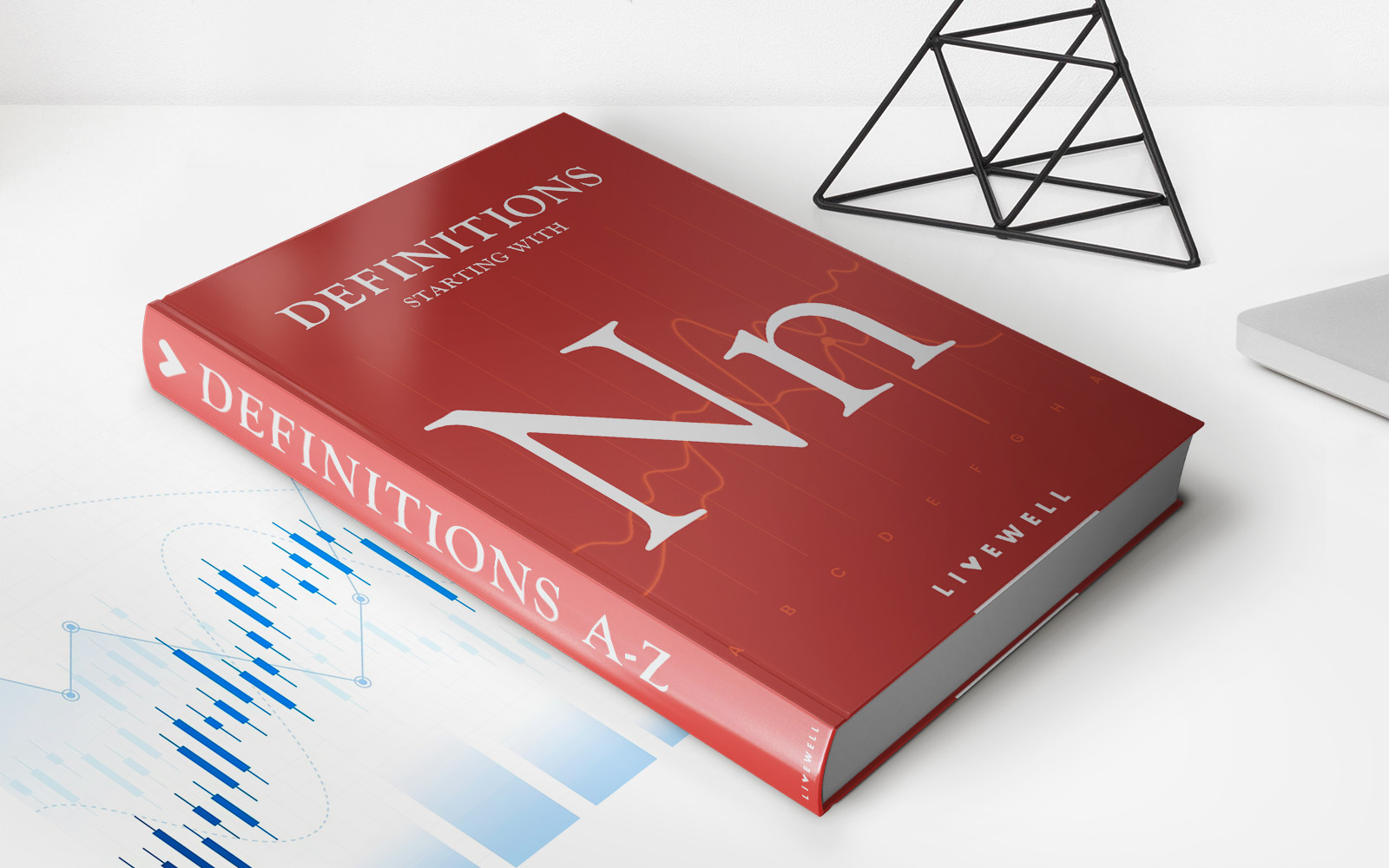

Finance
How Many Life Insurance Policies Can You Have?
Modified: December 30, 2023
Discover the answer to how many life insurance policies you can have to better manage your finances and secure your future.
(Many of the links in this article redirect to a specific reviewed product. Your purchase of these products through affiliate links helps to generate commission for LiveWell, at no extra cost. Learn more)
Table of Contents
Introduction
Life insurance is an essential financial tool that provides a safety net for your loved ones in the event of your untimely demise. It offers financial protection and can help cover expenses such as funeral costs, outstanding debts, and provide ongoing income for your family. While the primary purpose of life insurance is to provide peace of mind, many people wonder if they can have multiple life insurance policies and if it is a wise decision. In this article, we will explore the concept of having multiple life insurance policies and the considerations to keep in mind.
Before we delve into the topic, it is important to understand the basics of life insurance policies. Life insurance typically falls into two major categories: term life insurance and permanent life insurance. Term life insurance provides coverage for a specific period, such as 10, 20, or 30 years, while permanent life insurance offers coverage for the insured’s lifetime. Different policies have varying benefits, premiums, and terms, so it’s crucial to evaluate your needs and financial situation before purchasing.
Now, let’s address the question at hand – can you have multiple life insurance policies? The answer is yes, it is possible to have more than one life insurance policy. In fact, having multiple policies may offer several advantages, such as increased coverage and flexibility.
Understanding Life Insurance Policies
Before diving into the topic of having multiple life insurance policies, it is necessary to have a solid understanding of what life insurance policies entail. Life insurance is a contract between the policyholder and the insurance company, where the insurer agrees to pay a designated amount of money, known as the death benefit, to the beneficiary upon the insured’s death in exchange for regular premium payments.
There are two primary types of life insurance policies – term life insurance and permanent life insurance. Let’s take a closer look at each:
Term Life Insurance
Term life insurance offers coverage for a specified period, typically ranging from 10 to 30 years. If the insured passes away during the policy term, the death benefit is paid to the beneficiary. One of the main advantages of term life insurance is its affordability, as the premiums are generally lower compared to permanent life insurance. However, it is important to note that term life insurance does not offer any cash value or investment component.
Permanent Life Insurance
Permanent life insurance provides coverage for the insured’s entire lifetime, as long as the premiums are paid. Unlike term life insurance, permanent life insurance policies have a cash value component that grows over time, allowing policyholders to accumulate savings that can be accessed during their lifetime. There are various types of permanent life insurance, including whole life insurance, universal life insurance, and variable life insurance, each with its own set of features and benefits.
It’s essential to carefully evaluate and assess your financial needs, goals, and long-term plans when choosing the right type of life insurance policy. Factors such as the amount of coverage required, budget, and future financial obligations should all be considered to make an informed decision.
Can You Have Multiple Life Insurance Policies?
Yes, it is possible to have multiple life insurance policies. There is no legal restriction in most countries that prevents individuals from owning multiple policies. However, it is important to note that the availability of multiple policies may vary among insurance companies and the specific terms and conditions of each policy.
Having multiple life insurance policies can provide several benefits, including:
- Additional coverage: By having multiple policies, you can increase the overall coverage amount. This ensures that your loved ones are adequately protected financially in the event of your death.
- Diversification: Different policies may offer varying benefits and features. By diversifying your life insurance portfolio, you can take advantage of the strengths of each policy and tailor coverage to specific needs.
- Flexibility: Multiple policies provide flexibility when it comes to adjusting coverage amounts or beneficiaries. You can customize each policy to meet your changing needs over time.
However, it is important to consider a few factors before deciding to have multiple life insurance policies:
- Affordability: Owning multiple policies means paying premiums for each of them. It is crucial to ensure that the combined premiums are affordable and fit within your budget.
- Underwriting process: Obtaining multiple policies may require you to go through multiple underwriting processes, including medical exams and financial assessments. This can be time-consuming and may impact your insurability.
- Policy coordination: Managing multiple policies can be complex, especially when it comes to keeping track of premium payments, policy renewals, and beneficiaries. It is essential to stay organized and keep all policy documents in a safe place.
Ultimately, the decision to have multiple life insurance policies should be based on your financial goals, needs, and circumstances. It may be beneficial to consult with a financial advisor or insurance professional to assess your situation and determine the most suitable insurance strategy.
Reasons for Having Multiple Life Insurance Policies
There are several reasons why individuals may choose to have multiple life insurance policies. While it may not be necessary for everyone, certain circumstances and financial goals make it a viable option. Here are some common reasons why people opt for multiple life insurance policies:
1. Increased Coverage:
One of the main advantages of having multiple policies is the ability to increase your overall coverage. If you have significant financial responsibilities, such as a mortgage, outstanding debts, or dependents who rely on your income, having multiple policies can ensure that your loved ones are adequately protected in the event of your passing. It provides an additional layer of financial security during a difficult time.
2. Diversification:
Each life insurance policy has its own set of benefits, features, and terms. By diversifying your life insurance portfolio, you can take advantage of the strengths of different policies. For example, you may choose to have a term life insurance policy to cover your short-term financial obligations, while also having a permanent life insurance policy that offers lifelong coverage and cash value accumulation. This allows you to tailor your coverage to specific needs and goals.
3. Estate Planning:
Multiple life insurance policies can be a valuable tool for estate planning. They can help provide sufficient funds to cover estate taxes, ensure liquidity for immediate expenses, and facilitate the seamless transfer of assets to beneficiaries. By strategically structuring your life insurance policies, you can protect the value of your estate and simplify the distribution process.
4. Income Replacement:
If you have multiple sources of income or a complex financial situation, having multiple life insurance policies can help replace lost income in a more comprehensive manner. For example, if you have a business or investment properties, you may need separate policies to address the specific financial implications that may arise in the event of your death.
5. Flexibility:
Owning multiple policies provides flexibility when it comes to making changes or adjustments over time. Life circumstances can change, and having multiple policies allows you to modify coverage amounts, add or change beneficiaries, or adjust policy terms as needed. It offers greater control and customization of your life insurance strategy.
While having multiple life insurance policies can offer advantages, it is important to evaluate your financial objectives, budget, and long-term plans before making a decision. Consulting with a financial advisor or insurance professional can help you determine the best approach based on your individual needs and circumstances.
Considerations When Having Multiple Life Insurance Policies
While having multiple life insurance policies can provide certain benefits, it is crucial to carefully consider a few important factors before deciding to pursue this approach. Here are some key considerations when it comes to managing multiple life insurance policies:
1. Premium Affordability:
Owning multiple policies means paying premiums for each of them. It is important to assess your budget and ensure that the combined premiums are affordable and sustainable in the long run. Consider your current financial obligations and income to determine whether you can comfortably cover the premiums without straining your finances.
2. Underwriting Process:
Applying for multiple life insurance policies will likely involve going through multiple underwriting processes. Each policy may require medical exams, financial assessments, and other requirements. It is essential to be prepared for these processes, as they can be time-consuming and may affect your insurability. Understanding the underwriting requirements and potential impact on your coverage and premiums is necessary before moving forward.
3. Policy Coordination:
Managing multiple life insurance policies requires organization and attention to detail. You need to keep track of premium payments, policy renewals, and policy documents for each policy. It is important to ensure that you have a system in place to manage and coordinate your policies effectively. Consider setting up reminders, keeping all policy documents in a safe place, and regularly reviewing your coverage to ensure it aligns with your needs and goals.
4. Overlapping Coverage:
When you have multiple policies, it is possible for some coverage to overlap. It is crucial to carefully review the terms and benefits of each policy to avoid any duplication. Overlapping coverage may result in paying unnecessary premiums for redundant benefits. Ensure that you understand precisely what each policy covers to optimize your coverage and minimize overlapping benefits.
5. Regular Policy Reviews:
As with any financial product, it is essential to regularly review your life insurance policies to ensure they still align with your evolving needs and goals. Life circumstances, such as marriage, parenthood, career changes, or financial milestones, can all impact your life insurance needs. Regularly reassessing your policies allows you to make necessary adjustments, such as increasing or decreasing coverage, changing beneficiaries, or modifying policy terms.
Considering these factors will help you make an informed decision about having multiple life insurance policies. It is recommended to consult with a financial advisor or insurance professional who can guide you through the process and provide personalized advice based on your individual circumstances.
Steps to Manage Multiple Life Insurance Policies
Managing multiple life insurance policies may seem daunting at first, but with proper organization and attention to detail, it can be a manageable process. Here are some steps to help you effectively manage and keep track of multiple policies:
1. Organize Your Policy Documents:
Keep all your life insurance policy documents in one safe and easily accessible location. This includes policy contracts, premium statements, beneficiary designations, and any other relevant paperwork. Consider creating a digital folder or using a physical filing system to ensure you can quickly locate and reference your policies as needed.
2. Maintain a Premium Payment Schedule:
Create a premium payment schedule to keep track of when premiums are due for each policy. Missing a payment can result in a lapse of coverage, so it’s crucial to stay on top of your payment obligations. Set reminders or automate payments if possible to ensure that your premiums are paid on time.
3. Review Your Coverage Regularly:
Periodically review your life insurance coverage to determine if it still meets your needs and goals. Assess factors such as changes in income, financial obligations, and life circumstances that may influence your coverage requirements. Consider working with a financial advisor or insurance professional to help you evaluate your coverage and make any necessary adjustments.
4. Coordinate Beneficiaries:
Ensure consistency and avoid confusion by coordinating beneficiaries across your multiple policies. Review your beneficiary designations regularly and make any updates as needed. This helps to avoid potential conflicts or complications during the claims process and ensures that your intended beneficiaries receive the death benefits.
5. Understand Policy Terms and Benefits:
Thoroughly understand the terms and benefits of each of your policies. This includes knowing the coverage amount, policy duration, premiums, and any additional features or riders. Knowing the details of your policies helps you make informed decisions and optimize your coverage as per your needs.
6. Seek Professional Guidance:
If you find managing multiple policies overwhelming or have complex insurance needs, don’t hesitate to seek guidance from a financial advisor or insurance professional. Their expertise can help ensure that you have the most suitable coverage, provide clarity on policy details, and assist with any policy-related queries or concerns.
By following these steps, you can successfully manage multiple life insurance policies and optimize their benefits to meet your financial goals and provide the necessary protection for your loved ones.
Conclusion
Having multiple life insurance policies can be a viable option for individuals who want to enhance their financial protection and tailor coverage to their specific needs and goals. While there are considerations to keep in mind, such as affordability, policy coordination, and underwriting processes, the advantages of increased coverage, diversification, flexibility, and estate planning make it a worthwhile consideration for many.
Understanding the different types of life insurance policies, such as term life insurance and permanent life insurance, is essential in making informed decisions about your coverage. Evaluating your financial situation, future obligations, and long-term goals allows you to determine the most suitable approach to structuring your life insurance portfolio.
Additionally, practicing proper management and organization is crucial when dealing with multiple policies. Keeping your policy documents organized, setting up premium payment schedules, regularly reviewing your coverage, coordinating beneficiaries, and seeking professional guidance when needed are all important steps in effectively managing and maximizing the benefits of your multiple life insurance policies.
Remember, each individual’s financial situation is unique, and what works for one person may not necessarily work for another. It is advisable to consult with a financial advisor or insurance professional who can provide personalized guidance based on your specific circumstances.
In conclusion, multiple life insurance policies can provide an added layer of financial security and customization to meet your ever-changing needs. By carefully considering the reasons for having multiple policies, managing them effectively, and regularly reviewing your coverage, you can ensure that you and your loved ones are well-protected in the face of life’s uncertainties.














